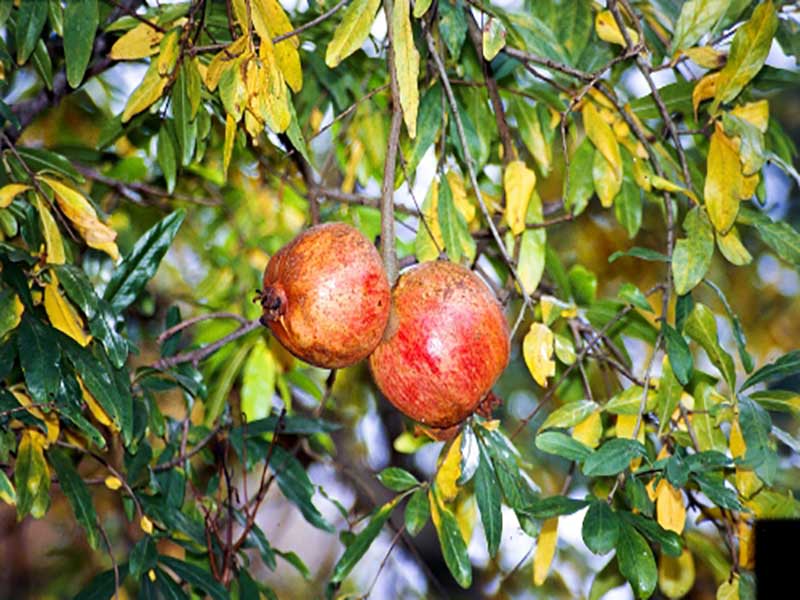What is the reason for the yellowing of pomegranate leaves? Pomegranate tree breeding
Once you notice yellowing of the leaves, especially if the leaves are twisted or deformed in any way, check the surface under the leaves, as the plant may have suffered from pest infestations such as aphids, floury lice, white flies and sequined insects.
One of the best and most pleasant gardening jobs in warmer areas is pomegranate tree breeding, whether it's ornamental or harvesting. Pomegranate tree is a fruitful plant and if you take care of it properly, it will serve you with delicious and juicy fruits. But if you want to have pomegranate, you should also be familiar with the problems of growing pomegranate trees so that in case of any symptoms of disease, pests or environmental problems immediately fix the problem so that your tree is not damaged. One of the problems with pomegranate tree breeding that you may encounter is the yellowing of pomegranate leaves. Sometimes the cause of yellowing of pomegranate leaves may be serious problems, and sometimes only a simple seasonal change. Here you will learn the reasons for the yellowing of pomegranate leaves.
What are the reasons for the yellowing of pomegranate leaves?
Pomegranate is a resistant plant that grows well even if you have low handling, but the plant's resistantness does not mean that you can completely leave it alone. One of the symptoms of problems in pomegranate tree is its yellow leaves. As soon as you see the yellowing of the leaves of the tree, you should look to identify the cause.
.jpg)
Cooling: If the leaves of the pomegranate tree turn yellow and shed, it may be caused by cold weather. Although this occurs in most deciduous plants in mid-autumn, pomegranate follows the same seasonal pattern. If you notice that the pomegranate leaves have turned yellow as it cools and you see no signs of tension in the plant, it is likely that the plant will prepare itself for low winter temperatures.
Excessive irrigation: After seasonal changes, the most common cause of yellowing of pomegranate leaves is excessive irrigation. It is natural that the fruit tree needs water to produce fruit, but pomegranate, unlike most fruit trees, is native to dry and dehydrated areas, so it doesn't really require much water. To ensure the correct irrigation method before each irrigation, let the soil surface dry completely. If there is too much rainfall in your area, reduce the amount of compost or mulch on the root area of the tree.
Inappropriate fertilization: Pomegranate tree fertilization requires great care. Excessive fertilization leads to root burns and yellowing of pomegranate tree leaves, but very little fertilization can also cause nitrogen deficiency and convert the color of the leaves to light green to yellow. For fertilization, it is best to have close monitoring of the tree and give it fertilizer if the color of its leaves starts to lighten. Immediately after flowering pomegranate is a good time to fertilize the plant so that it can have good loading.
Insect infestation and pests sucking plant sap: Insects and pests sucking plant sap can also cause yellowing of pomegranate tree leaves. If the pesticide is not severe, the symptoms of pest infestation are characterized by spots or spots on the leaves. When you notice yellowing of the leaves, especially if the leaves are twisted or deformed in any way, check the surface under the leaves, because the yellowing and torsion of the leaves may indicate an influx of pests such as aphids, floury lice, white flies and sequined insects. Spider web ticks can hardly be seen with the naked eye, but from its characteristic, yarn-like webs, you can discover the existence of this pest. Aphids, floury lice, white flies and spider web ticks are often controllable with regular spray of water on the plant, but you should use neem oil if the sequined insect has attacked your trees. Cherish oil is one of the natural and organic pesticides that is used in organic agriculture.

